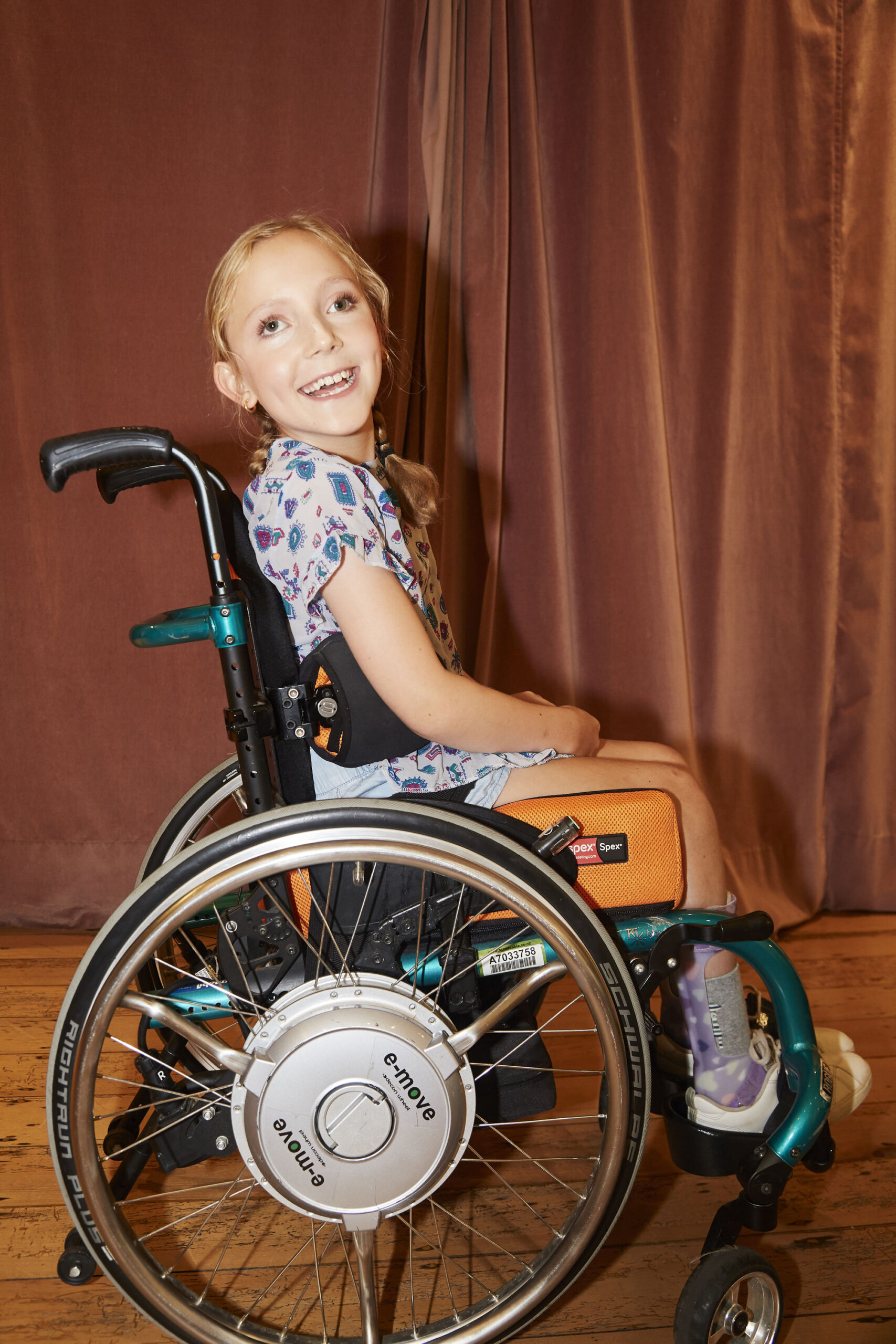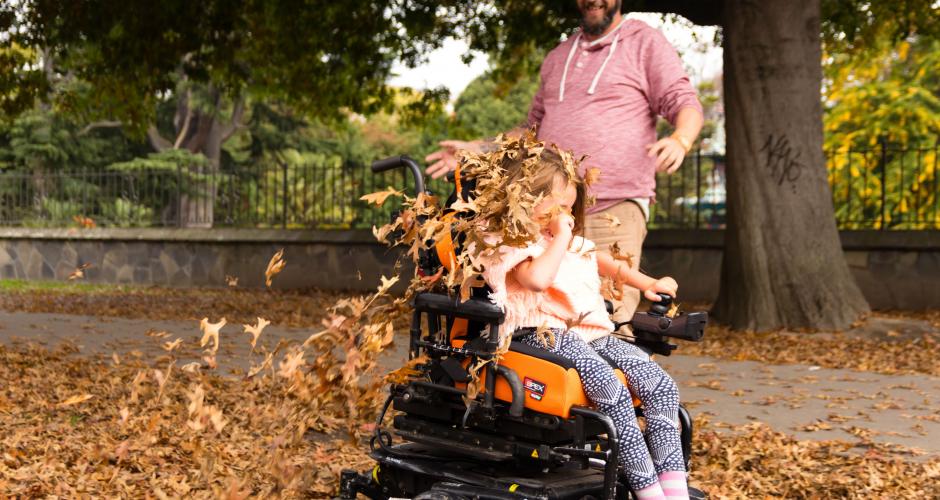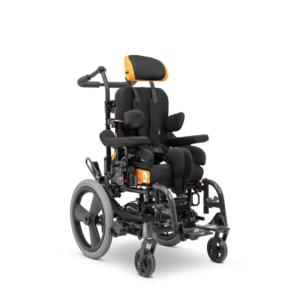In part one of this blog we explored the definition of comfort, which clearly includes both physical and emotional aspects, and how we need to consider this within wheeled seated mobility. So how do we do that?
A wheelchair may initially be a means to mobilise, but can also have an adverse impact on social engagement, self-identity, task execution (function) and maintaining a pleasant lifestyle if its configuration and set up isn’t appropriate and responsive for postural, functional and personal needs.
Wheelchairs are designed for generic users but with no one user being exactly alike, wheelchairs need to be adjustable to individual need. Wheelchairs include various components, such as the wheels, the frame, the seating system in contact with the wheelchair user (cushion, back support, armrest, footrest, head support, etc.) and accessories (brakes, powered controls, etc.). All of these can include various configurations that need to be selected in response to postural needs and clinical presentation, functional ability, functional goals and the environment within which the wheelchair will be used.
Examples of some of the wheelchair characteristics that might be considered when we consider optimising comfort include, but are not limited to:
- Tilt options within the wheelchair chassis and different cushion composition and contouring for improved pressure distribution and comfort.
- Contoured cushions and back supports, lateral trunk supports and head supports to improve stability and physical comfort which can then also allow improved upper limb function for activity engagement. The Spex allows directed contouring to respond to the persons unique body shape.
- Modular and configurable seating technology components that can rapidly respond to changing clinical presentations and postural needs, with compatibility across various wheelchair chasses. This can enhance emotional comfort by reducing the distress that future wheelchair changes and funding issues may create.
- Calf supports and padding around the metal frame components in contact with the legs to minimise pain or pressure areas and enhance physical comfort.
Being physically comfortable can relieve internal distractions from pain or fatigue and allow us to engage more fully in what is happening around us. Being able to comfortable access our chosen environments in a postural supportive seating system, allows engagement in those activities that define our ‘pleasant lifestyle’; these wheelchair characteristics can address both physical and emotional comfort needs directly and indirectly.
- What is the person’s presenting posture, including postural limitations and reducible postural deformities? What does the wheelchair need to provide to optimise or maintain body?
- How comfortable is the current seating system (if appropriate) and are there any peak pressures that could compromise skin integrity?
- What is the person’s clinical condition and how is this anticipated to change over time? Will the chosen wheelchair allow adequate responsiveness and adjustability to a rapidly changing presentation?
- What activities will the person be participating in? What activities will the person be participating in most of the time?
- What environment will the wheelchair need to be used in? How will the wheelchair user propel the wheelchair within this environment and what challenges might be present that could lead to participation restrictions?
- What is the person’s presenting pain? What makes it easier or worse?
- What is the person’s presenting mood? Will the wheelchair enable them to participate better, or restrict them?
- What is the person’s overarching concerns about the wheelchair?
- How often will the person be using the wheelchair? And how will they get in and out of the wheelchair?
- Who will be propelling the wheelchair, and does he/she have a physical limitation that needs to be considered?
- Where will the wheelchair be stored – is there sufficient space in the environment?
Some specific assessments you may be aware of that address these questions include:
- Manual assessment (MAT) – captures body shape, joint range of movement, limitations to movement and can also capture information relating to the person’s functional ability, environment and goals.
- Pain and mood scales
- Home / Environmental assessment – captures layout of the property, doorway widths, access points, any environmental factors that may support or prevent use of the wheelchair within the home environment.
- Pressure mapping to capture pressure distribution on the cushion and/or back rests and ensure correct cushion selection to protect skin integrity.
These assessments help us to ensure that we optimise comfort in the initial stages of wheelchair provision and to monitor changes over time in subsequent reviews. Initial wheelchair provision may focus on compensating for the loss of mobility with the “attention on the goal, rather than the process required to reach the goal.” (Pedretti, 1996, p.293); it can be a challenge to ensure that the wheeled seated mobility provision process is thorough and includes education about potential issues that might arise and considered within the equipment selection process. We know that physical and postural changes can occur with age and with various diagnoses. Social circumstances and environments will change over time. Understanding what has changed, what needs to be achieved within the wheelchair and what is a concern for the wheelchair user needs to be explored and addressed within the process of assessment and wheelchair provision. This includes conducting subsequent reviews and ensuring that wheelchair users and their family know how to raise concerns and access services when function, posture and comfort change.

How does Spex seating technology promote comfort?
For those unfamiliar with Spex seating technology, the question may be: “Why do people choose Spex?”
In the time since I joined the Spex Seating team, I have been privy to some amazing feedback from clinicians, customers and family members highlighting both physical and emotional comfort. Here are some examples:
- Spex seating allowed a wheelchair user to access the beach with his family during family holidays, which was not possible in his foam carved seating system.
- The axial lateral supports were like the ‘pair of hands’ a wheelchair user needed for trunk stability and to feel safe in the wheelchair.
- The comfy covers allowed formal and informal caregivers to more easily and quickly support transfers for the wheelchair user (see the case study ‘Spex as part of 24-hour Posture Care Management: Illustrative Case Study | Spex Seating’) which made reduced highlighting that comfort with Spex extends to wheelchair users and their caregivers.
- Wheelchair users can choose their own colours for their cushions and back supports for self-expression and self-identity, making their wheelchair fun and vibrant.
- The contouring of the cushions and back supports have reduced physical pain for some wheelchair users and improved pressure distribution and physical comfort.
- Some users report that being more comfortable means that they can tolerate sitting in the chair for longer and spend more time out and about with friends and family.
- The adaptability of the Spex contouring allows future-proofing that can reduce costs and reduce wheelchair user and family distress when considering the need to buy different products
- Increase comfort and stability allows wheelchair users to concentrate on the activity, the social interaction, without feeling uneasy or distressed – “She can be moved around different spaces … knowing that she’s safe, so that she just has to concentrate on connecting” (Ella’s mum, Celebrating Six years of SuperShape! | Spex Seating)
- For some wheelchair users who are non-verbal, the smile and/or achieved head control, once Spex components are configured and shaped to their individual needs, says it all.
There are many seating systems available and each must be selected based on clinical need and the assessment process above. It is always really rewarding to see the difference in physical and emotional comfort when the seating system gets its right.
 Thank you to all who have shared these stories of how Spex has helped you achieve that pleasant lifestyle, reduced distress and how the components have made your life easier and more comfortable.
Thank you to all who have shared these stories of how Spex has helped you achieve that pleasant lifestyle, reduced distress and how the components have made your life easier and more comfortable.




